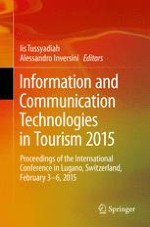2015 | OriginalPaper | Buchkapitel
Examining the Cultural Differences in Acceptance of Mobile Augmented Reality: Comparison of South Korea and Ireland
verfasst von : Hyunae Lee, Namho Chung, Timothy Jung
Erschienen in: Information and Communication Technologies in Tourism 2015
Aktivieren Sie unsere intelligente Suche, um passende Fachinhalte oder Patente zu finden.
Wählen Sie Textabschnitte aus um mit Künstlicher Intelligenz passenden Patente zu finden. powered by
Markieren Sie Textabschnitte, um KI-gestützt weitere passende Inhalte zu finden. powered by
